Text
Haha, thank you!!
It’s true: I gave my defense Friday and my committee passed me without any reservations, like, whatsoever?? which is very cool (truly the ideal scenario), but was WILD to experience in real time.
As one of my advisors mentioned, to paraphrase: “Of all the committees I’ve been on, this is the only closed session where the time was primarily dedicated to complimenting the candidate’s presentation.”
EDIT: Here’s some stills of slides from my defense BTW!
https://twitter.com/DennisForen/status/1286787107092979713
Hey everyone @quantum-friend-theory NOW HAS A PHD! CONGRATS FRIEND!!!!!!
#BIG NEWS#gradblr#maybe... for the last time??#what blr am I even now???#is there a postdocblr???#postdocblr#I guess??#Thanks Munira!#Munira is great and I highly recommend following fromquantumfluctuations if you like cool physics and study techniques and more!!#fromquantumfluctuations
114 notes
·
View notes
Text
Thanks for the supportive replies/messages, y'all! In < 3 (❤) weeks---unless something goes majorly wrong---I'll be a doctor of physics, which is ABSOLUTELY WILD. It's certainly been a lonnnng journey and I'm excited to move onto new & exciting things!
As my grad school career wraps up, I've been thinking about what comes next. One thing I'd like to do is start blogging again, especially in a pedagogical way. Being so absurdly busy with research means I haven't been making many things to support the wider physics-interested community, and I want to change that. Not sure on exactly how just yet, but I'll keep y'all posted!
In any case, I hope you're staying safe in these difficult times. Even if I'm sometimes too busy to say it, I'm always rooting for you!
Best wishes, friends.
can I get an AHHHHHHHHHHHHHH in the chat
66 notes
·
View notes
Text
can I get an AHHHHHHHHHHHHHH in the chat
#my thesis is due to my advisor today#to my committee in a week#and I defend in three weeks#and THINGS ARE A LITTLE STRESSFUL RIGHT NOW AS A RESULT
66 notes
·
View notes
Note
Hey Dennis! As a theorist, how do you keep journal articles and papers organized? I'm interested in setting up a workflow for myself to read over and mark up interesting papers, preferably one that integrates tablet pen annotations for PDF. Wondering if I should install Zotero and find a good PDF reader for this purpose. I've tried Mendeley and it's okay but hasn't been the easiest to use.
Hey qmch! I hope you’re doing well!
I unfortunately haven’t yet found a system that successfully integrates tablet pen annotations to the degree that I’d like. (If you find something that works for you, let me know so I can give it a try!) I can tell you how I organize my files and what-not though.
—–
My journal article/paper system is as follows:
1. Folder Hierarchy: I have a system of folders organized by decade (e.g. a “1990s” folder, “2000s” folder, etc.). I then download any given paper (usually as a pdf) into the decade folder corresponding to the decade in which it was published. I name the file based on publication date, then author(s), then title, e.g. “YYYY_MM_Author1Author2_TitleOfThePaper.pdf”
2. Notes: I take notes on the pdfs in Adobe Acrobat using comments / highlighting.
3. Summaries: At the top of the paper, I try to summarize (in a comment) why that paper is important to me, e.g. “This paper does [this thing]. It also corrects [earlier paper]. Here’s a rough sketch of the arguments involved:” and so-on.
4. Additional Info: For certain papers I might want to write up a more extensive summary with additional equations or calculations; in those cases I utilize an Overleaf document. I include the summaries/notes of any given paper I’m writing about in a new .tex file with a name identical to the corresponding .pdf file. I also organize those .tex’s into folders organized by decade. I can then compile whatever paper summary/notes I’m interested in at a given time by using “\input” commands in the main .tex file.
5. Flowchart: When I do extensive literature searches, I’ll sometimes use Scapple to make a flow chart of how various paper/articles are related. Scapple let’s me include hyperlinks that can point to the specific .pdf’s on my system as well as my Overleaf summary document.
—–
I don’t think my organization system is fancy as some others, but it works well for me!
Thanks for the ask, qmch! Have a great day!
Question for all of y’all: How do YOU organize your journal articles and papers?
93 notes
·
View notes
Photo




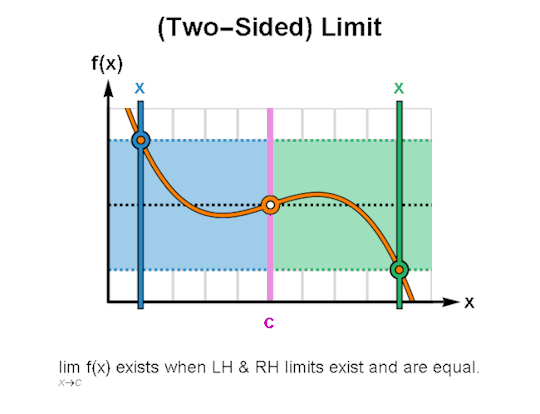
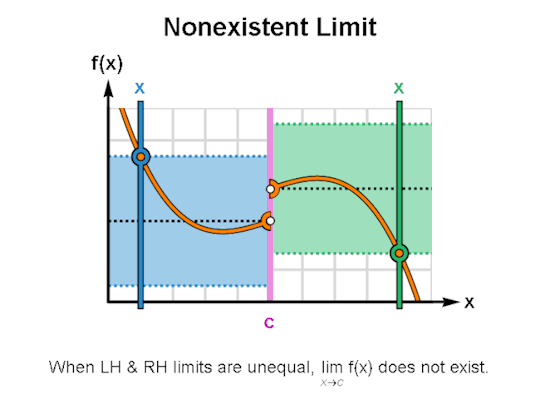
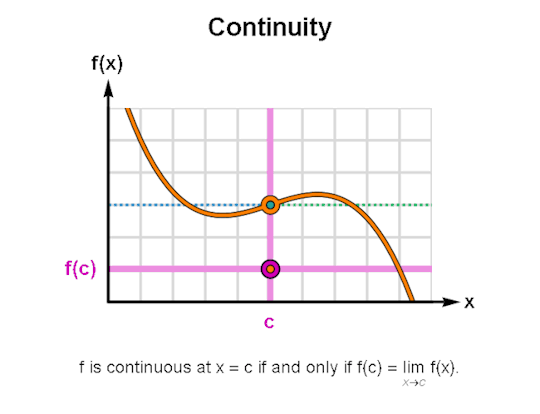
LIMITS & CONTINUITY
When learning calculus, a common first step is learning how to describe the behavior of functions, for which limits & continuity form a particularly important foundation. The above are GIFs I've made in Mathematica related to these topics.
I've been making these during breaks between writing sessions and they've been a lot of fun to create. If there are any other topics for which you'd like GIFs, let me know, and I might just do so. As always, I'm wishing you the best!
GIF descriptions below the break.
GIF 1: In this GIF, I've graphed a real function f(x) for x < c. From the plot's left edge, a point travels along the function. As the point's x-coordinate approaches c, its y-coordinate also approaches a value. This value is called "the Left-Hand (LH) Limit of f(x) as x approaches c."
GIF 2: A limit such as the LH limit need not exist. For example, in this GIF, a function oscillates wildly as x approaches c from the left, such that f(x) never approaches any specific value. For this function, the LH limit doesn't exist.
GIF 3: A function's behavior as x approaches c need not relate to the function's value at x = c. f(c) may even be undefined. In this GIF, I return to our 1st GIF's function & move f(c)'s value up-&-down while keeping the rest of f(x) in place. The LH Limit of f(x) at x = c is unchanged.
GIF 4: This GIF sure is familiar: here I've graphed a real function f(x) for x > c. From the plot's right edge, a point travels along the function. As the point's x-coordinate approaches c, its y-coordinate this time approaches "the Right-Hand (RH) Limit of f(x) as x approaches c."
GIF 5: For many common functions, the LH & RH limits of a function at x = c are equal. In these cases, we call their shared value "the (Two-Sided) Limit of f(x) as x approaches c." The GIF below combines the earlier LH & RH limit GIFs so that the limit of f(x) at x = c exists.
GIF 6: The limit at x = c doesn't exist if the LH and RH limits disagree or if either is nonexistent. In this GIF, the LH and RH limit GIFs have been shifted vertically apart before being combined. Thus, although the LH and RH limits at x = c both exist, the limit at x = c does not.
GIF 7: Finally, as remarked earlier, the existence of a limit at x = c doesn't mean the limit equals f(c) (if f(c) even exists at all). However, if the limit at x = c does happen to equal f(c), we declare the function to be Continuous at x = c. This is a definition of continuity.
#EDIT: corrected GIF 6 which previously changed title mid-GIF#mathblr#my art#calculus#limits#continuity#scienceblr#sciblr#gradblr#grad school#physicsblr#animation
817 notes
·
View notes
Photo


Given a function f(x) which is continuous on an interval [a,b] & differentiable on its interior, the Mean Value Theorem guarantees there exists a value c in that interval such that the line tangent to the function when x = c is parallel to the line drawn between ( a , f(a) ) and ( b, f(b) ).
(GIF Description: A function f(x) is plotted from x = a to b, and a red line is drawn b/w its endpoints at ( a , f(a) ) & ( b , f(b) ). A point tracing f(x) carries a compass that records the tangent’s slope relative to the red line. When their slopes are equal, x is labeled c. In the first GIF, the function has a single maxima. In the second GIF, the function has multiple extrema.)
#thank you for this incredible addition#memes#lilseaturtle#also thanks to everyone who has been super positive and supportive of this GIF; it means a lot to me!#best wishes <3
350 notes
·
View notes
Photo


Given a function f(x) which is continuous on an interval [a,b] & differentiable on its interior, the Mean Value Theorem guarantees there exists a value c in that interval such that the line tangent to the function when x = c is parallel to the line drawn between ( a , f(a) ) and ( b, f(b) ).
(GIF Description: A function f(x) is plotted from x = a to b, and a red line is drawn b/w its endpoints at ( a , f(a) ) & ( b , f(b) ). A point tracing f(x) carries a compass that records the tangent's slope relative to the red line. When their slopes are equal, x is labeled c. In the first GIF, the function has a single maxima. In the second GIF, the function has multiple extrema.)
350 notes
·
View notes
Photo

(GIF Description: Like the first GIF, except now the function leaves the range defined by the endpoints of the domain.)
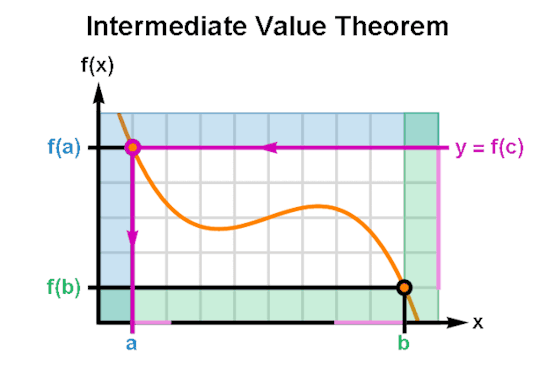
The Intermediate Value Theorem guarantees that for every real number “y” between two outputs of a real continuous function f(x) there exists at least one value “c” between the corresponding inputs such that y = f(x) when x = c.
(GIF Description: The graph of a function f(x) as it ranges from x = a to x = b. Per frame, an output value y between f(a) and f(b) is shown to intersect the curve f(x) for some x = c. As the GIF animates, y sweeps across the range of f(x) and indicates a value of c for every y.)
#my art#mathblr#intermediate value theorem#scienceblr#sciblr#gradblr#grad school#physicsblr#animation
209 notes
·
View notes
Photo

The Intermediate Value Theorem guarantees that for every real number "y" between two outputs of a real continuous function f(x) there exists at least one value "c" between the corresponding inputs such that y = f(x) when x = c.
(GIF Description: The graph of a function f(x) as it ranges from x = a to x = b. Per frame, an output value y between f(a) and f(b) is shown to intersect the curve f(x) for some x = c. As the GIF animates, y sweeps across the range of f(x) and indicates a value of c for every y.)
209 notes
·
View notes
Text
Y'know, some days you spill one entire mug of coffee onto your desk. Some days it just be like that.
#this morning you can find Dennis in... a Coffee Catastrophe#food mention#gradblr#sometimes it just be like that
48 notes
·
View notes
Note
Have you ever dealt with anxiety with working with people? I'm studying physics and hope to go into high energy theory, but I really have trouble going to office hours and working with other students because it's way more comfortable for me to work alone, but I don't perform nearly as well. Any advice?
CW: anxiety, mental health
Hey there, anonymous! Thanks for the ask! Before I answer, I want to emphasize that (as per usual) my answers are based on my own experiences and are not representative of the full set of experiences out there. Furthermore, when I talk about anxiety (or anxiety-adjacent responses) below, I only mean being anxious to the degree of being uncomfortable, and not something necessarily requiring more substantial external support. I’m not qualified to give advice regarding the latter.
To begin: Yes, working with people absolutely makes me anxious sometimes. I stress out in anticipation of interacting with people I don’t know well, get jumbled up during conversations (”Am I living up to this person’s idea of me? Do they even have an idea of me??”), and I repeat interactions over-and-over again in my head after the fact even when they went totally fine. I’ve had to work on all of that via continued practice, as well as reminding myself that 1. most people aren’t jerks, so working with people is lower stakes than my brain wants me to think, and 2. jerks aren’t worth stressing over. But all of that’s more-so advice about social anxiety. I presume you want physics-oriented advice.
One thing I’ve noticed in my physics career specifically is that I’ve had significantly different experiences between working with people as a student vs. working with people as a researcher. In either case, I work best with people when I know explicitly what I desire from collaborating with them and take steps to meet those desires.
As a student: When I think about working with people as a student, I first think of things like completing homework or studying for exams. In these cases, people can be invaluable because they might know (for instance) where a specific problem is more-or-less solved in a textbook, have course notes they might like to share, or may have access to learning resources of which you’re unaware. The number of times I’ve spent many hours working on a problem only to find out that “oh, the prof took that straight from a different textbook which has a whole section about solving that kind of problem” or “actually, we realized there’s a typo that makes it unsolvable” is FRUSTRATING to say the least. I highly recommend getting yourself added to (or coordinating the creation of) a group chat where people can share these sorts of resources + information, such as by asking anyone with whom you can comfortably make eye contact & who seems friendly enough something like “Hey, do you know if there’s a group chat for this class? If there isn’t, I’d be down help get one started. It seems like that could be useful.” If it’s an upper-level physics course, you will likely be sharing classes with the same group of students over-and-over, so the benefits of communication can carry over to other classes too.
Beyond that, you might also want to work with others on solving homework problems. Idk about all of y’all, but I had this misconception for a long time that people were formally forbidden from working on homework together; however, many profs expect you to work with others so long as you don’t just copy someone else’s solution. Even then, finding people I wanted to work with was pretty hit-or-miss: most people I tried to work with either were receptive to my solutions but didn’t help fill in my own knowledge gaps (so that support wasn’t really going both ways, leaving me feeling drained) or would solve something & immediately give away the answer (which–as a person who learns largely by struggling with material for an extended period of time–spoiled the learning experience for me). Thankfully, even with these specifications for what I wanted in a homework partner, I did find a few like-minded students. Regarding the people with whom I didn’t synergize: when I found myself becoming stressed while working with them, I had to be honest (with them and myself) and convey to them one way or another “This workflow doesn’t align with my own objectives, so I’m going to try something different.”
All of that being said: there were many assignments and projects I did 100% solo, and–although I may’ve obtained a lower grade than if I’d teamed up–the added comfort + control of working alone was worth it. By doing things the way I wanted to do them, I gained experience as my own brand of physicist and further honed what being a physicist meant to me. (Furthermore, for any of you who are worried about your grades: I know many physicists who had low GPA’s and who are successful physicists.) In fact. knowing how to do every aspect of certain calculations to my own standards was actually super beneficial once I became a researcher in high energy theory.
As a researcher: Working with people as a researcher is different than as a student. Instead of being one individual among a class of students all reporting solutions of known problems to a professor, I am now an investigator reporting directly to my research advisor about problems that don’t necessarily have well-defined solutions. My available collaborators are other researchers (students + post-docs + professors) who typically report to the same research group head. Mileage will vary, but you have a significant control over how much you work with people in high-energy theory. My first two publications were done essentially solo, with my advisors just providing paper-writing support. Even now that I’m working on projects with a team, I work from home 95% of the time and essentially only interact with my coworkers in meetings and via e-mail. I’m doing very well for myself with this set-up! Interacting with my advisor consists largely of summarizing my own investigations, and I make a point when collaborating with my coworkers to clearly establish who is doing what to avoid friction between people. If anything, when it comes to working with others at my job nowadays, I’m most stressed about whether or not they’re generating the same quality of work that I am… and I handle that by being straightforward with them, e.g. “I worry that this work is lacking [positive quality X], because [evidence Y]. What do you think?” It’s something that took practice (because I struggle with confrontation and my fight-or-flight response is busted), but I eventually realized that a majority of my coworkers are actively trying to produce good work too (because they’ve also got skin in the game) and thus will support efforts to improve a project’s final quality.
To close: I provide all of the above anecdotal info simply as an N=1 data sample for your own decision-making. The way you and I handle some of the aforementioned obstacles may be different, and that’s totally okay. Returning to your question, my advice is ultimately: Figure out what you want to do, and then communicate to others in a way that ensures you can do physics the way you want to do physics. As in research, there’s often more than one way to solve a problem: if you are uncomfortable working with people in certain regards, there may be a way to use your strengths to avoid having to do that.
Thanks again for the ask! I hope this has helped. I’m wishing you the best, my friends! (EDIT: I reorganized the last paragraph some.)
#ask#long post#anxiety#mental health#advice#studyblr#researchblr#physicsblr#sciblr#scienceblr#academia#academics
30 notes
·
View notes
Text
Okay, but consider: what if instead of doing a post-doc, I leaned into making widely-accessible online physics content.
Pros include: not moving every few years, not dealing with “publish or perish” or egos, choosing my collaborations on a project-by-project basis, helping people learn about a subject that I’m passionate about, can work from home, schedule is automatically compatible with my insomnia
Cons include: how make money though, how keep access to physics journals
43 notes
·
View notes
Text
Noether’s Theorem - A Quick Explanation

Noether’s Theorem is super rad. The theorem is, colloquially,
>> Continuous symmetries imply conserved quantities. <<
Let’s dig into the origin of this powerful theorem and list a couple of examples. I’ll restrict my attention to a subclass of symmetries for the sake of space, buuuut if there’s interest, I could do a more general post in the future. (Heads up: because this post is written using LaTeX, it’s probably easiest to read directly from my blog.)
• Defining the Lingo: A Lagrangian is a function that (after some manipulation) yields the physical evolution of a system. A generic Lagrangian $L$ can be a real continuous function of…
$m$ real parameters $t_j$, where $j=1,\cdots,m$, and
$n$ pairs of paths, which we label $q_i(t_1,\cdots,t_m)$ and $\tilde{q}_i(t_1,\cdots,t_m)$, where $i=1,\cdots,n$ and a path means “a real continuous function of the aforementioned parameters”
In this exceedingly general case, we might write
$$L = L(q_1,\cdots,q_n,\tilde{q}_1,\cdots,\tilde{q}_n,t_1,\cdots, t_m)$$
However, for the sake of clarity, let’s restrict ourselves to one parameter $t$ and one function pair $(q,\tilde{q})$. Let’s further suppose $L$ depends on its parameter only through the function pair, aka let us write $L = L(q,\tilde{q})$ (as opposed to $L = L(q,\tilde{q},t)$). This is the case relevant to a classical particle confined to a friction-free line, wherein $q(t)$ is the particle’s position along the line and $t$ records the time.
While $L$ is constructed to be a function of position $q(t)$ and some other path $\tilde{q}(t)$, we always intend to eventually set $\tilde{q}(t)$ equal to the velocity $\dot{q}\equiv dq/dt$. Furthermore, of the many combinations $(q(t),\tilde{q}(t))$ equaling $(q(t),\dot{q}(t))$, nature chooses the pair satisfying the Euler-Lagrange equation:
$$\left.\dfrac{\partial L}{\partial q} \right|_{\tilde{q} = \dot{q}} = \dfrac{dp}{dt}$$
where
$$p\equiv \left. \dfrac{\partial L}{\partial \tilde{q}}\right|_{\tilde{q} = \dot{q}}$$
The differential equation we get from plugging a specific $L$ into the Euler-Lagrange equation is called the equation of motion of the system, and $p$ is the momentum conjugate to $q$.
• The Main Idea: No matter the specific form of $L$, we can plot it over $(q,\tilde{q})$ space. (To be clear: this is the space of values to which the paths $q(t)$ and $\tilde{q}(t)$ are mapping, so essentially the real plane.) The resulting plot will look something like the left plot in the following image:

I’ve made a point to highlight contours of constant $L$ in orange. The right plot projects those contours onto the $(q,\tilde{q})$ plane. These contours lie at the heart of Noether’s Theorem: imagine we slide the coordinates $(q,\tilde{q})$ around in the plane so that each point moves continuously along a contour of constant $L$. Usually the shape of $L$ is changed when we distort the $(q,\tilde{q})$ plane below it, but by forcing each $(q,\tilde{q})$ to flow along a contour, $L$ is unaffected! A continuous transformation that leaves $L$ unchanged is called a continuous symmetry of the Lagrangian.
We can make this whole business quantitative by parameterizing the sliding operation with a real variable $\alpha$. Let’s choose $\alpha$ so that $\alpha=0$ corresponds our initial unchanged $(q,\tilde{q})$ plane. Then the statement “$\alpha$ parameterizes contours of constant $L$” is mathematically expressible as
$$\left.\dfrac{dL}{d\alpha}\right|_{\alpha =0} =0$$
which equals, by the chain rule of differentiation,
$$\dfrac{\partial L}{\partial q}\hspace{3 pt}\left.\dfrac{dq}{d\alpha}\right|_{\alpha =0} + \dfrac{\partial L}{\partial \tilde{q}} \hspace{3 pt} \left.\dfrac{d\tilde{q}}{d\alpha}\right|_{\alpha =0} = 0$$
Now, this equation holds true across all of $(q,\tilde{q})$ space, including along the physical path solving the equations of motion. For that path, we may use the Euler-Lagrange equation, the definition of conjugate momentum $p\equiv \partial L/\partial\tilde{q}$, and the fact that $\partial \dot{q}/\partial \alpha = d/dt(\partial q/\partial \alpha)$ to write,
$$\dfrac{dp}{dt} \hspace{3 pt} \dfrac{\partial q}{\partial\alpha} + p \hspace{3 pt} \dfrac{d}{dt}\left[\dfrac{\partial q}{\partial \alpha}\right] = 0$$
aka, according to the product rule of differentiation,
$$ \dfrac{d}{dt}\left[p \hspace{3 pt} \dfrac{\partial q}{\partial \alpha}\right] =0 $$
In other words, the value of $p \hspace{3 pt} (\partial q/\partial \alpha)$ doesn’t change in time–it’s a conserved quantity! This is a special case of Noether’s Theorem.
If we repeat the above calculation with $n$ paths $q_i(t)$, we instead derive
$$\boxed{\hspace{10 pt}\dfrac{d}{dt}\left[\vec{p}\cdot \dfrac{d\vec{q}}{d\alpha}\right] =0 \hspace{10 pt} }$$
where $\vec{q} \equiv (q_1,\cdots,q_n)$ and $\vec{p} \equiv (p_1,\cdots, p_n)$, and we find that
>> Momentum along a continuous symmetry direction is conserved. <<
This powerful statement allows us to identify conserved quantities from symmetries alone. For example…
• 1. Coordinate Translation Symmetry: Suppose $L$ doesn’t depend on the coordinate $q_i$ for some value of $i$. Then the translation $q_i\mapsto q_i+\alpha$ is a continuous symmetry transformation. Because $dq_k/d\alpha$ is nonzero only for the coordinate we’re transforming ($k=i$), the associated conserved quantity is…
$$\vec{p}\cdot \dfrac{d \vec{q}}{d\alpha} = p_i$$
which is the $i$th conjugate momentum. And so, coordinate translation invariance necessarily implies conservation of the corresponding momentum.
• 2. Rotational Symmetry: Suppose $L$ depends on the coordinates $(x,y,z)$ and is invariant under the rotation of $x$ and $y$ into one-another:
$$ x\mapsto (\cos\alpha)x + (\sin\alpha)y\hspace{50 pt}y\mapsto (\cos\alpha)y -(\sin\alpha)x$$
Then we may calculate,
$$\left.\dfrac{d x}{d\alpha}\right|_{\alpha =0} = y\hspace{50 pt} \left.\dfrac{d y}{d\alpha}\right|_{\alpha =0} = -x$$
from which Noether’s Theorem implies conservation of…
$$\vec{p}\cdot \dfrac{d\vec{q}}{dt} = p_x y - p_y x = - L_z$$
where $L_z$ is the angular momentum in the $z$-direction. Rotational invariance necessarily implies angular momentum conservation.
• Closing Comment: Note how we didn’t need an explicit form for $L$ to make these arguments. Noether’s Theorem tells us that conserved quantities naturally emerge not as coincidences, but from the presence of symmetries. Consequently, if I experimentally observe a conserved quantity (like electric charge, or color charge, or even things like lepton number) then I can make my model consistent with that observation by encoding certain symmetries into my Lagrangian. In this way, Noether’s Theorem is impressive in both its elegance and practical power.
Thanks for the ask, anonymous! I hope this helped. Although I didn’t have space to discuss it here, Noether’s Theorem also extends to Lagrangians with explicit parameter dependence, systems with multiple evolution parameters (like QFT), instances where $(q,\tilde{q})$ transformations change $L$ by a total derivative, and more. One extension allows us to demonstrate how time translation invariance yields energy conservation.
Have a physics question you think I might be able to help answer? Send me an ask. Until then, have a great day! Best wishes, my friend!
#I'm currently reworking older posts for a new blog and I think this will be one of the first I post!#I'll let you know when I do!#Best wishes <3#physics#physicsblr#sciblr#scienceblr#researchblr#Noether's Theorem
99 notes
·
View notes
Photo

Image Description: an October 30th, 2019 tweet by @DennisForen reads:
Me, about to expand a Lagrangian to quadratic order and find the system’s oscillatory frequencies: “Vibe check.”
(My Twitter)
204 notes
·
View notes
Note
Ok, so I’ve always loved physics but because we constantly moved places i never had a proper physics class at school, except for that one in sixth grade that i don’t remember anymore, so what would you say are the basics that i should learn/know? I don’t know if that question’s too general or not, but I’d be happy with any answer that you’re willing to give. Thx.
Hola! Thanks for the question!If I’m interpreting your question correctly, then you’re not necessarily aiming to be a Professional Physicist™. Thankfully, there’s many creators out there who produce physics content (blog posts, podcasts, youtube videos, twitter threads, etc.) aimed precisely at people who want to learn about cool things in physics without yet dealing with the technical details. In fact, regardless of your end goal or current physics status, I think that type of content is really useful for learning cool topics, how physics fits into society, and what physicists consider important these days. In other words, I think it’s a great place to advance your physics knowledge! As for the general topics you might learn…
As for topics: If you’re looking for something more structured than the aforementioned media, I recommend searching online for physics lecture notes (sometimes there’s videos or audio too!) from courses titled “introductory physics”, “modern physics”, or from the “core four” subjects. The core four subjects are emphasized by most physics curricula, and consist of classical mechanics, quantum mechanics, statistical mechanics, and electromagnetism (aka “classical”, “quantum”, “stat mech”, “E&M”). You can also search university websites to find what courses they require for a physics minor or major, and then direct your investigations accordingly. Oh, check out astrophysics + astronomy too! Universities often list those degrees separately and the corresponding programs have ALL KINDS of cool star stuff!
General advice: Physics is a really broad topic with tons of subfields, so learning all of it is unfeasible. In fact, depending on your end goal, you might not even need popular subjects such as quantum mechanics. Thus, when exploring this field, I ultimately recommend learning things that 1. you think might be cool, and 2. whatever things you need to accomplish your goals.
Thanks for the ask, thanks everyone for reading, and best wishes!
Question to y’all out there: What physics content (e.g. blogs, podcasts, videos) do you personally enjoy and recommend?
52 notes
·
View notes
Text
I keep meaning to make a longer post and forgetting about it soooooo:
Some of my papers got cited by Big Name Physicists and Y'ALL that euphoria is going to carry me through the rest of 2019.
#academic success energy#grad school#grad life#gradblr#sciblr#scienceblr#researchblr#physicsblr#academia#academics
167 notes
·
View notes
Text
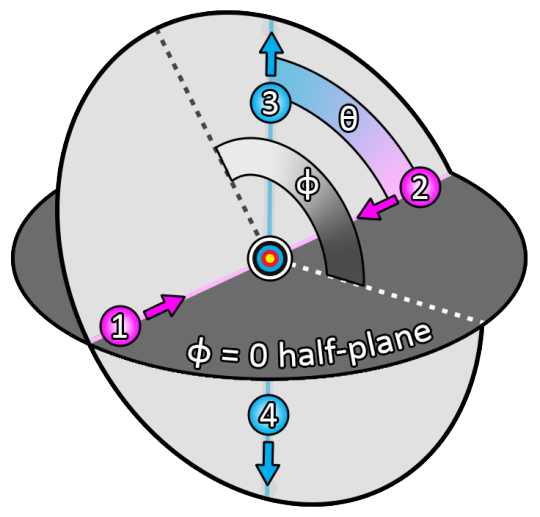
Snapshots :: 2-to-2 Scattering in the Center of Momentum (COM) Frame
#snapshots#my art#scattering theory#Euler angles#physicsblr#scienceblr#sciblr#researchblr#gradblr#academia#academics
84 notes
·
View notes